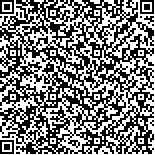| Quote
: |
许万松.不同用穴方案针刺治疗餐后不适综合征型功能性消化不良的临床观察[J].湖南中医药大学学报英文版,2017,37(12):1373-1377.[Click to copy
] |
|
| |
|
|
| This paper
:Browser 3525times Download 1936times |
| 不同用穴方案针刺治疗餐后不适综合征型功能性消化不良的临床观察 |
| 许万松 |
| (泰州市人民医院, 江苏 泰州 225300) |
| 摘要: |
| 目的 比较不同用穴方案针刺治疗餐后不适综合征型功能性消化不良(PDS)患者的近期和远期疗效,为寻求合理的用穴方案提供部分理论依据。方法 选择84例在我院消化科确诊并进行针刺治疗的PDS患者,其中29例患者进行基础穴位针刺,55例患者根据症型进行辨证针刺,均治疗2个疗程。比较两组患者疗程结束后和随访2个月后的临床疗效、症状疗效指数(FDI)、尼平消化不良指数(NDI)、健康相关生活质量评分(SF-36)。并在治疗前后,抽血检测患者血清胃泌素(GAS)和胃动素(MTL)水平。结果 治疗2个疗程后,普通针刺组和辨证针刺组的总有效率差异有统计学意义(P<0.05)。治疗结束后和随访2个月后,辨证针刺组FDI分数与普通针刺组比较,差异有统计学意义(P<0.05)。治疗结束后和随访2个月后,辨证针刺组患者NDSI和NDLQI分别与普通针刺组比较,差异有统计学意义(P<0.05)。治疗2个疗程和随访2个月后,辨证针刺组患者SF-36与普通针刺组比较,差异有统计学意义(P<0.05)。治疗2个疗程后,辨证针刺组患者血清中GAS和MTL水平与治疗前和普通针刺组比较,差异均有统计学意义(P<0.05)。结论 通过辨证分析餐后不适综合征型功能性消化不良患者的临床症型,合理选择用穴方案,可显著改善患者的症状,提高生活质量,同时也可以改善患者血清胃泌素和胃动素含量,具有较好的近期和远期疗效。 |
| 关键词: 餐后不适综合征 功能性消化不良 不同用穴方案 临床疗效 生活质量 |
| DOI:10.3969/j.issn.1674-070X.2017.12.018 |
| Received:May 16, 2017 |
| 基金项目: |
|
| Clinical Effect of Different Acupoint Acupuncture on Functional Dyspepsia Patients with Post-prandial Distress Syndrome |
| XU Wansong |
| (Taizhou People's Hospital, Taizhou, Jiangsu 225300, China) |
| Abstract: |
| Objective To compare the short-term and long-term effect of different acupuncture on functional dyspepsia (FD) patients with post-prandial distress syndrome (PDS). Methods 84 cases of patients with FDS were selected and divided into the traditional acupuncture group (n=29) treated with basis acupoints and the syndrome differentiation acupuncture group (n=55) with basis acupoints and other specific acupoints according to the patients' symptoms. The different symptom curative effect index, the MOS-36-ITEM short form health survey (SF-36), and Nepean dyspepsia index (NDI) were made a comparison between the two groups after treatment and 2 months' follow-up. Results After 2 courses of treatment, the total effective rate of the ordinary acupuncture group and the dialectical acupuncture group was statistically significant (P<0.05). After the treatment and after 2 months of follow-up, compared with the ordinary acupuncture group, the FDI scores of the dialectical acupuncture group were statistically significant (P<0.05); the NDSI and NDLQI of the dialectical acupuncture group were significantly different from those of the ordinary acupuncture group (P<0.05). After 2 courses of treatment and 2 months follow-up, the difference of SF-36 between the dialectical acupuncture group and the ordinary acupuncture group was statistically significant (P<0.05). After 2 courses of treatment, the serum levels of GAS and MTL in the dialectical acupuncture group were significantly different from those before treatment and in the ordinary acupuncture group (P<0.05). Conclusion The different acupuncture on FD patients with post-prandial distress syndrome (PDS) according to the patients' symptoms with better short-term and long-term effect is safe and feasible, which is worthy of clinical promotion. |
| Key words: post-prandial distress syndrome functional dyspepsia different acupoint acupuncture scheme clinical effect life quality |
|

二维码(扫一下试试看!) |
|


